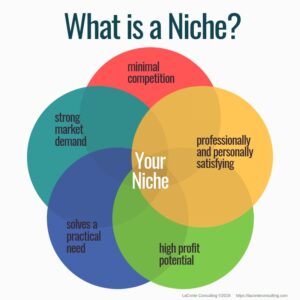
How to make money from blogging: the complete free guide in 2024 with proper explanation :

Introduction
Blogging has evolved significantly over the years, and in 2024, it remains a powerful way to earn money online. Whether you’re looking to supplement your income or build a full-time business, blogging offers a flexible and creative way to make money. This guide will walk you through the entire process, from setting up your blog to monetizing it effectively, all without spending a dime.
Step 1: Choosing the Right Niche
Importance of a Niche
Your blog’s niche is the specific topic or area you’ll focus on. Choosing the right niche is crucial because it helps you stand out in a crowded market and attract a dedicated audience. A well-defined niche makes it easier to create content that resonates with your readers and positions you as an authority in that area.
Identifying Your Passion and Expertise
Start by listing your passions, hobbies, and areas of expertise. What topics can you talk about endlessly? Your passion will keep you motivated, while your expertise will add credibility to your blog.
Market Research
Once you’ve identified potential niches, conduct market research to determine demand and competition. Use free tools like Google Trends to see how popular a topic is and Keyword Planner to identify search volume and competition for related keywords. This research will help you choose a niche with a good balance of demand and competition.

Step 2: Setting Up Your Blog
Selecting a Platform
To start blogging, you’ll need a platform. WordPress.com, Blogger, and Wix are popular free options. WordPress.com offers a wide range of customization options and is user-friendly for beginners. Blogger is another simple, free option owned by Google, while Wix provides drag-and-drop functionality, making it easy to design your blog without coding skills.
Choosing a Domain Name
Your domain name is your blog’s address on the internet. A memorable and SEO-friendly domain name is essential. Keep it short, relevant to your niche, and easy to spell. If possible, choose a .com extension, as it’s the most recognized.
Web Hosting Options
While free platforms come with hosting, upgrading to a self-hosted blog gives you more control and the ability to monetize more effectively. 000WebHost and InfinityFree offer free hosting options for beginners who are not ready to invest in paid hosting.
Step 3: Creating High-Quality Content
Content Strategy
Creating high-quality content is the backbone of a successful blog. Start by developing a content strategy that outlines your goals, target audience, and types of content you’ll produce. Plan your content around topics that are relevant to your niche and of interest to your audience.
SEO Basics
Search Engine Optimization (SEO) is vital for driving organic traffic to your blog. Learn the basics of on-page SEO, including keyword research, optimizing meta tags, and using headers correctly. Free tools like Yoast SEO or Rank Math can help optimize your content for search engines.
Content Types
Diversify your content by creating various types of posts, such as listicles, how-to guides, product reviews, and case studies. Different formats appeal to different segments of your audience and can help keep your content fresh and engaging.
Consistency is Key
Consistency is crucial in blogging. Develop a content calendar and stick to a regular posting schedule. Whether you post weekly or bi-weekly, consistency builds trust with your audience and helps improve your search engine rankings.
Step 4: Growing Your Blog’s Audience
Social Media Promotion
Promoting your blog on social media is a free and effective way to reach a broader audience. Platforms like Instagram, Pinterest, and Twitter are great for sharing your content and engaging with readers. Tailor your content for each platform to maximize its impact.
Email Marketing
Building an email list is one of the most valuable assets for a blogger. Use free tools like Mailchimp to collect email addresses and send newsletters. Offer a freebie, like an eBook or exclusive content, to encourage visitors to subscribe.
Guest Posting and Backlinks
Guest posting on other blogs in your niche is an excellent way to gain exposure and backlinks. Backlinks from reputable sites improve your blog’s domain authority and help it rank higher in search results. Reach out to other bloggers and propose guest posts that offer value to their audience.
Step 5: Monetizing Your Blog
Affiliate Marketing
Affiliate marketing is a popular way to make money blogging. By promoting products or services and including affiliate links in your posts, you can earn a commission on sales generated through your links. Join free affiliate networks like Amazon Associates or ShareASale to find products related to your niche.
Sponsored Posts and Reviews
As your blog grows, you may attract offers for sponsored posts and product reviews. Companies pay bloggers to write about their products, and this can be a lucrative income stream. Always disclose sponsored content to maintain transparency with your readers.
Ad Networks
Joining ad networks is another way to monetize your blog. Networks like Google AdSense and Media.net allow you to display ads on your blog and earn money based on clicks or impressions. These networks are beginner-friendly and accept small blogs.
Selling Digital Products
Creating and selling digital products, such as e-books, online courses, or printables, can be a highly profitable way to monetize your blog. Platforms like Gumroad or Teachable allow you to sell digital products without upfront costs.
Step 6: Tracking and Optimizing Performance
Google Analytics
Tracking your blog’s performance is essential to understand what’s working and where you can improve. Set up Google Analytics to monitor traffic, user behavior, and conversion rates. Use this data to refine your content and marketing strategies.
A/B Testing
A/B testing involves comparing two versions of a webpage or content to see which performs better. Test different headlines, images, and call-to-action buttons to optimize your blog’s performance. Free tools like Google Optimize can help with A/B testing.
Continuous Improvement
The blogging landscape is constantly changing, so it’s essential to stay updated with the latest trends and strategies. Follow other successful bloggers, participate in webinars, and continually educate yourself to keep your blog growing.
Conclusion
Starting a blog and making money from it in 2024 is entirely possible without significant upfront investment. By following this guide, you can build a successful blog that attracts a loyal audience and generates income. Remember, consistency, high-quality content, and patience are key to long-term success.
FAQs
How long does it take to make money from blogging?
It varies, but typically, bloggers start seeing income within 6 to 12 months of consistent effort.
Do I need to invest money to start making money from a blog?
No, you can start and grow your blog using free tools and platforms. However, investing in premium tools and services can accelerate growth.
you can watch this video.
What are some common mistakes new bloggers make?
Common mistakes include not choosing a niche, inconsistent posting, and neglecting SEO. Avoiding these pitfalls can set you on the path to success.
This guide provides a comprehensive roadmap for making money through blogging in 2024, focusing on free strategies and tools to help you get started without financial risk.
Share : facebook.com twitter.com linkedin.com

1 thought on “How to make money from blogging: the complete free guide in 2024 with proper explanation”